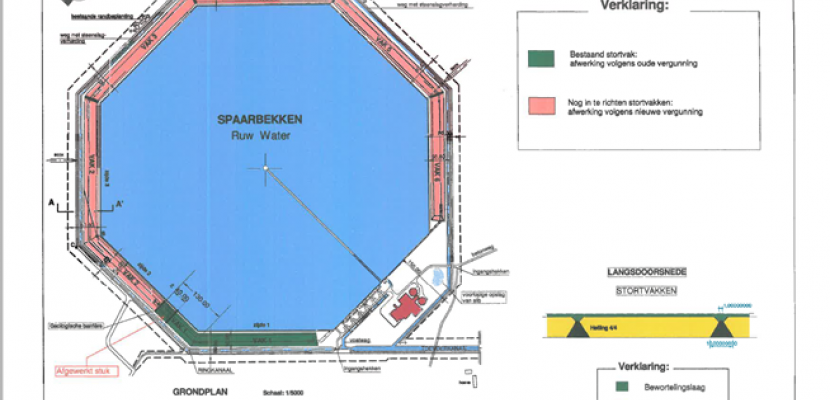Image

De Blankaart landfill mining project: an economic viable case
Published on 21 November 2019

Belgium
Prov. West-Vlaanderen
This is the good practice's implementation level. It can be national, regional or local.
About this good practice
De Blankaart is a large pond in the West Flanders province. It is the main source of drinking water for this area and managed by De Watergroep.
During the process of purifying water, lime is added to the mixture to settle down the iron chloride that is present in the water. For years and years, this end product was very hard to sell, because the only sector interested in it was the cement industry and they would ask a compensation for this. Therefore, management chose to store the product and create a 5 metres high buffer wall around the pond. This to camouflage it from the surrounding natural environment. About 49k m³ of waste is stored on site.
Meanwhile, the economic situation changed dramatically. The lime caught the interest of the agricultural sector as a way to neutralize the soil pH. Due to the high iron content, higher than some ores, the sludge also is sold to processing companies. The latest economic advantage (since 2014), is using the waste in bio digesters in Northern France. Demand for this type of material is very high in France, to that extent that a resource recognition procedure is pending at the government to speed up the transports.
De Watergroep not only has a financial benefit is mining its landfill. The current drinking water treatment installation became too small and they are not allowed to expand because of the nature area around the pond. The space that can be won by removing the landfill is enough to be able to proceed with the project.
During the process of purifying water, lime is added to the mixture to settle down the iron chloride that is present in the water. For years and years, this end product was very hard to sell, because the only sector interested in it was the cement industry and they would ask a compensation for this. Therefore, management chose to store the product and create a 5 metres high buffer wall around the pond. This to camouflage it from the surrounding natural environment. About 49k m³ of waste is stored on site.
Meanwhile, the economic situation changed dramatically. The lime caught the interest of the agricultural sector as a way to neutralize the soil pH. Due to the high iron content, higher than some ores, the sludge also is sold to processing companies. The latest economic advantage (since 2014), is using the waste in bio digesters in Northern France. Demand for this type of material is very high in France, to that extent that a resource recognition procedure is pending at the government to speed up the transports.
De Watergroep not only has a financial benefit is mining its landfill. The current drinking water treatment installation became too small and they are not allowed to expand because of the nature area around the pond. The space that can be won by removing the landfill is enough to be able to proceed with the project.
Resources needed
This project will generate netto income for De Watergroep.
Evidence of success
Due to changing economic factors and years of good management, a landfill for the first time contains a product which is so valuable that a landfill mining project with a positive net present value can be established. 49.000 m³ of waste will be treated.
Thanks to a policy change (dating 1/10/2019) in the environmental permits of Flanders, this type of projects can be specifically categorized under a spefici code.
Thanks to a policy change (dating 1/10/2019) in the environmental permits of Flanders, this type of projects can be specifically categorized under a spefici code.
Potential for learning or transfer
In a time the iron sludge wasn’t worth much, the Watergroep consequently chose for a qualitative management of the landfill. Today this has lead to a ditto product which is highly sought after in several sectors (agricultural, industrial and energy). This understanding fits perfectly in a circular economy, since the landfill never was considered to be the terminus of an industrial process. Instead, storing of the waste for esthetical reasons was an example of interim use, contributing to the larger surrounding area and preparing it for that moment in the future where conditions would be favourable to proceed with the next step. That future moment is today.
See also the COCOON good practice on temporary storage policy for landfills in Flanders.
See also the COCOON good practice on temporary storage policy for landfills in Flanders.
Further information
Website
Good practice owner
You can contact the good practice owner below for more detailed information.
Organisation
De Watergroep

Belgium
Prov. West-Vlaanderen
Contact
Project coordinator
